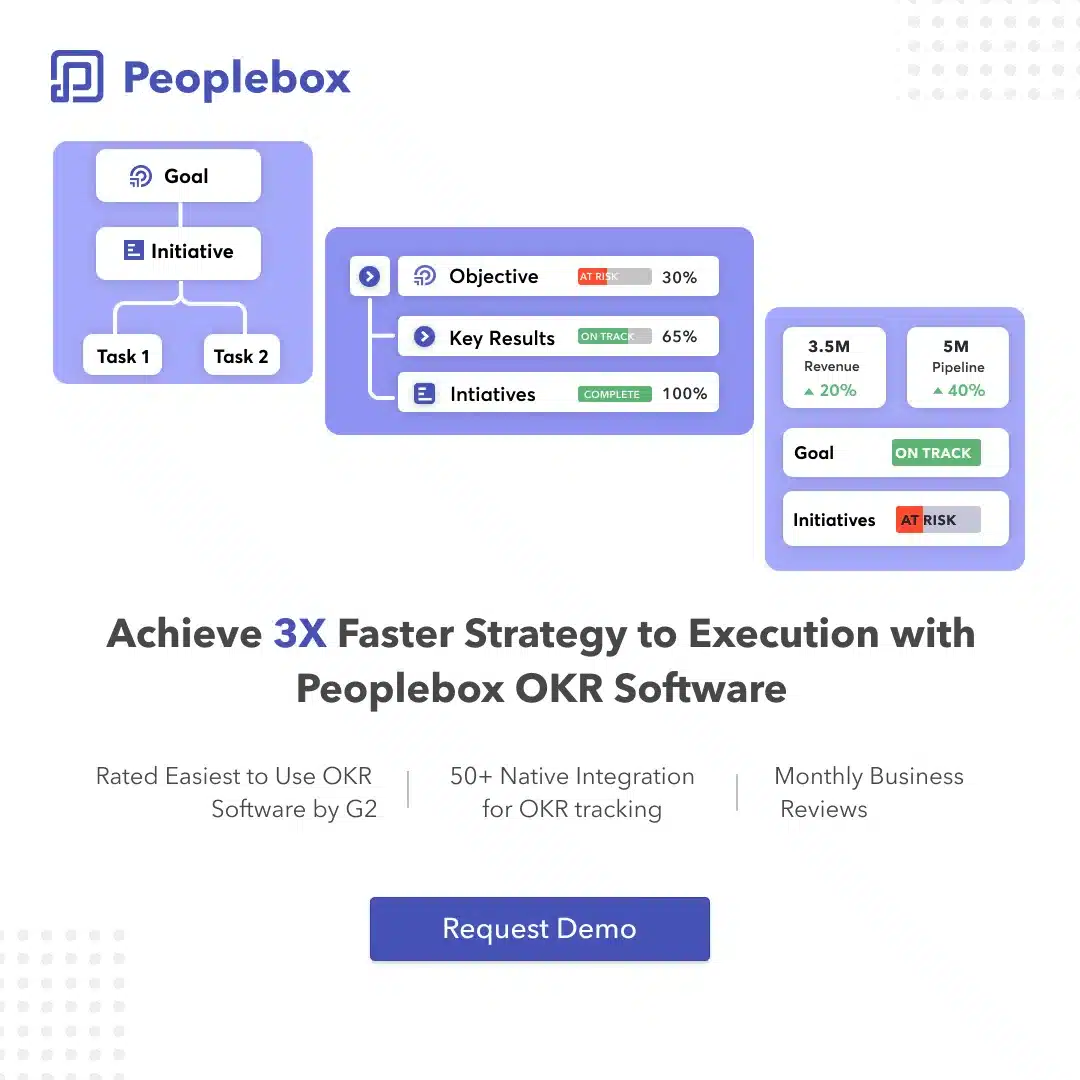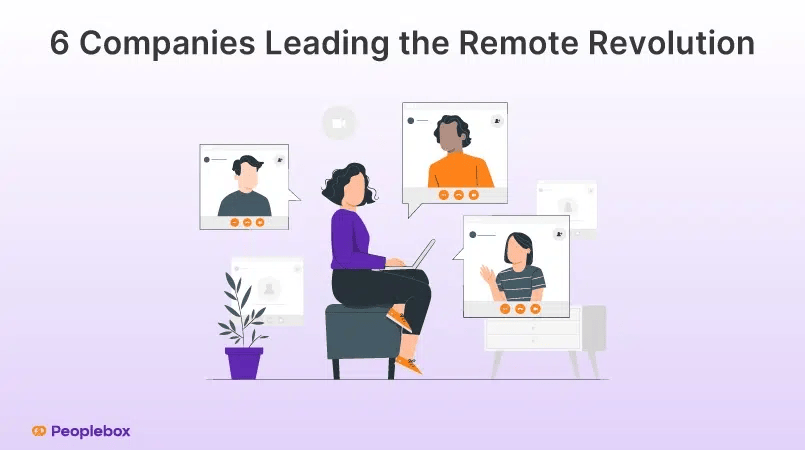A transformation from traditional work culture to a more remote working model has been taking place with more and more remote companies coming into existence.
Is your company considering to have a long-term plan for remote work as well? If you are still confused about whether it is going to benefit you or not, let’s look at how remote work has impacted some of the companies with a significant impact on the business world.
Take a look at 6 companies, who have successfully embraced remote work culture and what you can learn from them to make your remote teams a success.
Top 6 remote companies and what you can learn from them
First let us talk about 3 remote companies that have been successful on a global scale without having an office-
InVision
InVision, the company which provides one of the world’s most powerful screen design tool, has more than 1000 employees working remotely spread over 20 countries.
InVision shows the path for building (and sustaining) culture and employee experience, and collaboration among teams in a remote environment.
How do they do it?
InVision puts much value on trusting their distributed teams to ensure their company culture. And it starts from their first day of onboarding
To ensure collaboration and connection among employees they have certain norms such as- to thank a colleague for going above and beyond. Employees at InVision also have their employee recognition and rewards solutions.
To rebuild the energy of working together just like in a physical office they use Zoom room and a Freehand to work and chat with their teammates. They rely on tools like Slack to communicate and collaborate.
They work asynchronously, to deal with the issue of having employees in multiple countries and time zones. They record any video call where important decisions are being made and post them for others to see to add a little more continuity and sync.
“As far as team bonding and feeling lonely, I feel closer to my co-workers at InVision than I have been to co-workers in traditional offices.”
JENNIFER ALDRICH,UX and Content Strategist at InVision.
InVision offers its employees home-office stipend and coffee-shop vouchers to encourage them to work in the location they feel most productive.
They also offer unlimited vacation and encourages personal-interest Slack channels for employees to better connect with each other.
InVision also teaches that keeping your remote employees happy is the primary requisite for a productive , motivated and dedicated workforce.
At InVision, CEO and senior staffers put employee happiness at the core. They, in fact, have an actual official Director of Employee Happiness.
InVision has an effective onboarding process for new remote hires where they help their new hire settle into the role, grow knowledge and understanding about the company and empower them with the tools, information, and resources they need to get up to speed quickly.
What you can learn
- Since company culture directly influences things like employee happiness and engagement, it is necessary to ensure and sustain it.
- InVision shows the path for building (and sustaining) culture and employee experience and collaboration among teams in a remote environment.
- Keeping your remote employees happy is the primary requisite for a productive, motivated, and dedicated workforce. And this process starts from the very day of onboarding.
Build super-connected remote teams
Provide the tools (1:1s, OKRs, Check-ins, CoffeeConnect) your managers need to be in regular touch with their teams
Virtual Games for Remote Teams
CoffeeConnect connects two people every week based on their interests in slack and helps them build camaraderie easily with ice-breakers questions, rapid-fire quizzes and virtual coffee.
Avoid blindspots with real-time engagement insights
Gain real-time insights into people & culture to drive growth for your people & business
Automattic
Automattic is best known for giving the world the free and open-source blogging platform WordPress.
Founded in 2005, Automattic has around 1,170 employees scattered across more 75 countries, speaking 93 languages.
How they do it?
- To keep employees in sync they rely on tools like Slack, Wikis, Zoom and P2, a WordPress theme for more in-depth discussions. They also have an internal blog to keep the communication open and constant.
- They arrange meetups 1-2 times a year to help their employees strengthen the bond with co-workers from different cultures and work together as a team. In addition to this Grand Meetup, teams meet each year for five to seven days to brainstorm team-level strategy and bond.
- They have Connectomatic for hosted Zoom calls based on shared interests and experiences.
- They use the Donut app for Slack, which randomly pairs off co-workers to help them better interact and get to know each other.
- Automattic’s HR team organize monthly Zoom gatherings called The People Lab, where speakers present anything HR or Diversity -related.
- They have initiated distributed postcards which employees pick up from their local area and send it to a fellow Automattician. They also have an opt-in gift exchange program
What you can learn
- Being remote doesn’t mean being disconnected. So focus on building connections between co-workers and keep them in sync.
- Hiring for your remote teams needs to be approached differently. You need to look for the specific skills along with the candidate’s ability to adjust in your remote work culture.
- You can take a lesson from Automatic on how to build connections between co-workers.
Zapier
Since its launch in 2011, Zapier has been working entirely remotely. It has more than 200 employees spread over more than 15 countries.
How do they do it?
They use a combination of transparency and communication along with automation to make their employees feel valued and engaged.
To Keep remote employees motivated and passionate about their tasks, they start with hiring the applicants who have really used their product before and love it.
Zapier believes in inclusion as the key driver of employee engagement. Thus they ensure that all employees are in the loop by keeping them updated about every change suggested by management. They also encourage employees to offer their input about these decisions.
Zapier also includes fun remote employee engagement activities like channels on Slack where employees can connect with their co-workers on the topic of their interest.
For managing and smooth functioning, they use tools like SheetsCodafor, Airtable, Jira, Rover, Looker, GitHub, Zappy along with more common tools like Slack, Zoom, Google Calendar, Gmail, Google Docs, etc. They use SkillSurvey, to gather background information through data-driven decisions while recruiting new hires.
What you can learn
- Keeping your remote employees engaged is an important aspect of the company’s success. Thus use a combination of transparency and communication along with automation to make your employees feel valued and engaged at every level of the organization.
- Hire employees who appreciate the products and services you offer to best represent your company.
- Make tools your best friend when it comes to managing remote employees. They can make things easy for you as well as your employees.
Build super-connected remote teams
Provide the tools (1:1s, OKRs, Check-ins, CoffeeConnect) your managers need to be in regular touch with their teams
Virtual Games for Remote Teams
CoffeeConnect connects two people every week based on their interests in slack and helps them build camaraderie easily with ice-breakers questions, rapid-fire quizzes and virtual coffee.
Avoid blindspots with real-time engagement insights
Gain real-time insights into people & culture to drive growth for your people & business
3 Companies that have adopted remote working for good post-pandemic

Fujitsu
The global technology firm Fujitsu has decided to primarily work on a remote-basis.
“As a DX (Digital Transformation) company, Fujitsu positions digital technology at the heart of our “Work Life Shift” policy.”
Manabu Morikawa, Senior Director, Employee Relations Division, Global Human Resources Unit, Fujitsu.
How do they do it?
They are planning to introduce “Zinrai for 365 Dashboard”, an AI-powered work style transformation service to help them grasp the current situation and solve problems that emerge over the course of implementing remote working.
Fujitsu also gives an emphasis on factors like employee wellbeing and happiness.
They have been focusing on employee autonomy and trust to maximize team performance and improve productivity. In addition, they have wellness checks to offer support to help employees’ physical and mental well being.
Fujitsu also gives an emphasis on factors like employee wellbeing and happiness.
What you can learn
- If you want your company to succeed, you need to find what’s working and what’s not in your company and keep your employees constantly engaged.
- Well-being has a crucial part in maintaining employees’ performance and productivity. Thus build a comprehensive well-being program that best suits your remote teams.
- Inculcate trust and provide job autonomy to save yourself from the urge of micromanaging.
Twitter was the first company to start work from home while the pandemic started, and also the first company to allow its employees to work from home permanently, even after the pandemic ends. Although this new policy wouldn’t apply to employees whose jobs require a physical presence, such as maintaining computer servers and office works.
How do they do it?
Twitter listened to employee surveys and initiated a stipend to set up an appropriate home office set up for employees including expenses for home office equipment, such as desks, desk chairs, and ergonomic chair cushions.
They also increased their investments in mental and physical health benefits to navigate through their new reality.
Twitter has initiated resources to help managers foster deeper empathy with their direct reports. Twitter also introduced a flexible work schedule for its employees through asynchronous work, allowing employees to decide how and when to work.
What you can learn
- Acknowledge the difficulties your employees may face while shifting to a remote work system and help them deal with those issues. Put your employees on the top and Listen to their needs.
- Don’t forget that your employees are humans too. And lead them with empathy trust and flexibility.

Shopify
Shopify has been working in a hybrid model with both remote and in-office workforces. But they announced fully remote work in March 2020.
How do they do it?
At Shopify, they facilitate podcasts, videos, and worksheets, as well as workshops, webinars, and 1:1 meetings to give their team the tools to stay engaged and productive.
To keep the goals clear and transparent they create a document for each project to explain the project, the rationale, the timelines, and key stakeholders.
They have embraced tools like GitHub, Trello, Google Jamboards, Figma, Tuple, and Google Meet for better virtual collaboration.
What you can learn
- Focus on the emotional engagement of employees to keep them motivated and engaged.
- Set clear and transparent goals to make your employees understand the priorities and help them focus on things that align with the company’s vision and mission.
Benefits of remote work

Remote work is one of the fastest-growing trends in the modern workplace.
Why should you opt for remote work than traditional office
1 Hire the best talent
Remote work makes team augmentation possible. Since you are working with distributed teams, you get the luxury to hire the best talent for your company from any location.
2 High employee productivity, creativity and morale
Remote teams not only get more done, but they are also willing to go that extra mile for their company when compared to in-office workforce.
Remote employees also get the privilege to work without any distractions which is a common thing while working in an office with other co-workers. It also increases the work hour as they spend less time on breaks and coffee-machine chats.
In an experiment by Nicholas Bloom, remote workers worked 9.5 % longer and were 13% more productive.
3 Increased employee satisfaction and happiness
The flexibility that remote work offers to work from anywhere, anytime leads to higher employee satisfaction. Working remotely also gives employees the chance to work on other important things in their lives by saving them time they otherwise would have wasted in commute.
Increased happiness and job satisfaction among remote employees leads to lower turnover in comparison to traditional office culture.
4 Cost-efficient
“For Hubstaff, I estimate working remotely saves us over $100K per year.”- Dave Nevogt, CEO
Remote working helps employees to save on food, commute, and other expenses they might otherwise incur at a traditional workplace.
It benefits employers as well by reducing in-house facilities, leasing fees, IT utilities and other expenses.
Build super-connected remote teams
Provide the tools (1:1s, OKRs, Check-ins, CoffeeConnect) your managers need to be in regular touch with their teams
Virtual Games for Remote Teams
CoffeeConnect connects two people every week based on their interests in slack and helps them build camaraderie easily with ice-breakers questions, rapid-fire quizzes and virtual coffee.
Avoid blindspots with real-time engagement insights
Gain real-time insights into people & culture to drive growth for your people & business
5 Better employees engagement
According to a two-year study by Stanford University, remote workers are, on average 9% more engaged in their jobs.
Moreover, the technological advances make it easier to keep your distributed teem in the loop and keep them engaged by making them feel part of the larger scenario.
Conclusion:
While remote works have been a well-established practice for some companies, some others are still exploring and experimenting with its scope. Covid-19 has further shifted the working scenario.
Follow the footsteps of these companies, grant your remote employees true autonomy and flexibility, make proper use of tools like these companies have etc. make your transformation to remote teams a success.








